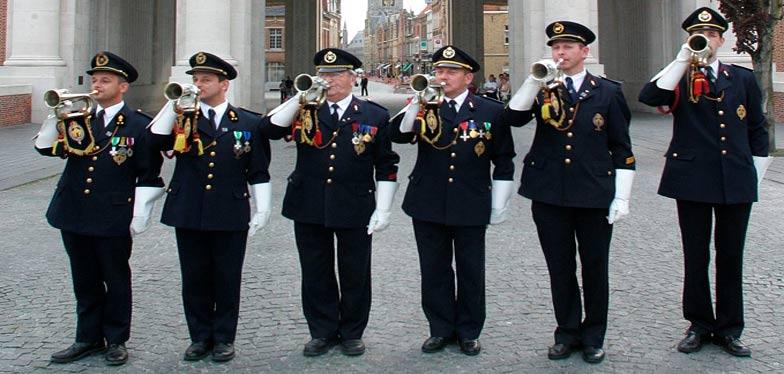Did you know that the Last Post in Ypres has already been performed more than 30,000 times?

The traffic at the Menin gate in Ypres is brought to a brief standstill at 8 pm on the dot, evening after evening. This is when you will hear the melancholy and moving sound of the clarion of the Last Post, which was originally a trumpet signal from the British army. The serving officer on site would check whether all the sentries were at their post. After his inspection it was a tradition, during the 17th and 18th century, to sound the bugle, announcing the end of the day and heralding the night. A confirmation of peace and quiet. Later the signal became a musical salute, sounded to honour fallen soldiers at their graves, symbolising a final farewell and the start of eternal rest.
When the Menin gate was inaugurated on 24 July 1927, the British performed the very first Last Post, attended, among others, by King Albert I and the British Field Marshall Lord Plumer. Those living in Ypres and a number of prominent Belgians, including the town's former police commissioner Pierre Vandenbraambussche, were so taken with the moving ceremony that they wished to continue showing their respect for the dead in some way. This was when he proposed the idea of continuing a regular musical tribute under the Menin gate. In 1928 the Royal British Legion returned to Ypres, joined by many widows, family members and veterans from 1914-18. The first performance was given on 2 July, and this was repeated daily until the end of September the same year. After the winter, on 1 May 1929, the The Last Post Association was founded, as the Ypres society responsible for the event's creation and organisation. Ever since, the Last Post has been performed daily and, in the meantime, more than 30,000 times. The only time there was a break in the ceremony was during the German occupation in the Second World War. Although it was not expressly banned by the Germans, no further Last Post was to be heard between 20 May 1940 and 5 September 1944. However, on the evening of 6 September 1944, just a few hours after the Germans had left Ypres and Polish troops had liberated the town, a fireman stood there once again to re-establish the tradition.
Those playing the clarion are members of the voluntary fire brigade. It was ‘Dick’ Collick, a British man working in Ypres for the British war graves, who taught the fireman how to play the Last Post. Initially they simply wore their work clothes, and held their instruments in one hand and their caps in the other. Their lack of ceremonial gear gave rise to some criticism, which gradually led to the firemen donning their uniforms instead.
In recent decades the Last Post has become incredibly popular in countries such as the United Kingdom, Canada, Australia, New Zealand, India and other Commonwealth countries, not to mention Ireland, and relatives of those who died still come and visit Ypres. The days when no one paid any attention to the daily ceremony, except the two clarion blowers and the agents holding up the traffic through the Menin gate, are now long gone.